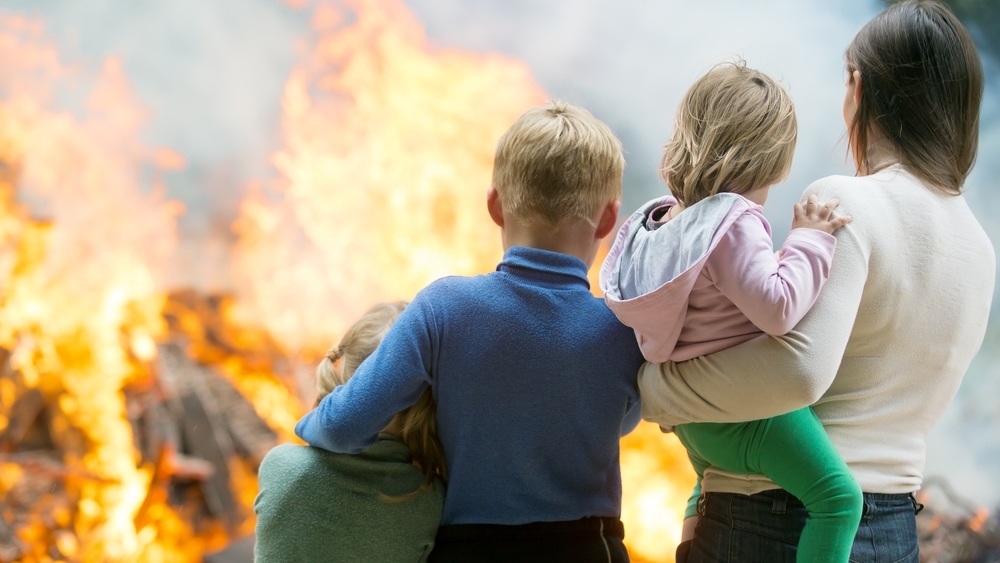Although no one wants to contemplate a cherished home being destroyed by fire, it’s an important topic to address — with emphasis on prevention and preparation.
A home free from fire hazards. Fire prevention is the first priority. Never allow flammable materials to be stored near heat sources such as water heaters, furnaces, fireplaces and stoves. When cooking, keep kitchen towels and hot pads away from the stove. Use a kitchen timer to remind you when foods are ready. Don’t run electrical cords under rugs. Don’t overload extension cords or outlets. Never use a grill inside a home.
Second line of defense: Working smoke detectors. Working smoke detectors should be installed in every sleeping room of the house and at key points within common areas. They should be systemic, meaning that if one goes off, they all go off. Test smoke alarm batteries monthly. Replace batteries twice per year, and replace detectors that are more than ten years old. More than half the home fire deaths in the United States occur in homes with no smoke detectors or no working smoke detectors. Another key piece of equipment to have is a fire extinguisher, especially in the kitchen.
Creating a plan. Use graph paper and draw your home’s floor plan to scale. Include every window and door. Then, for each room of the house, choose two means of escape. Go over the plan in detail with the family. Teach every family member their escape routes. Have flashlights available throughout the house since a fire at night can knock out electricity and fill the house with smoke. Having quick access to a cell phone can be critical in notifying authorities. Everyone should be taught to escape by crawling on the floor to avoid breathing in smoke. Another item to have is a home fire escape ladder, one for every upstairs bedroom. Finally, agree upon a place to meet outside of the home in the event of a fire.
Practicing your plan. With your safety plan in place and all the tools you need, fire safety experts recommend rehearsing the plan as if a real fire were burning in the home.
Should disaster strike. In the event of a fire, keep calm and evacuate the house per your plan. Call 911, state your name and address. Tell them you are evacuating and whether all family members have been accounted for outside the home.
Smart evacuation. Before escaping through a closed door, touch the door and the handle with the back of your hand. If they are warm or hot to the touch, then fire is on the other side of the door and a second escape route should be used. Everyone should also know the “stop-drop-and-roll” technique for putting out fire should their clothes ignite. Finally, once you are out of the house, never go back in. If a family member or pet remains inside, tell the fire crew. They are trained and equipped to rescue people and pets.


